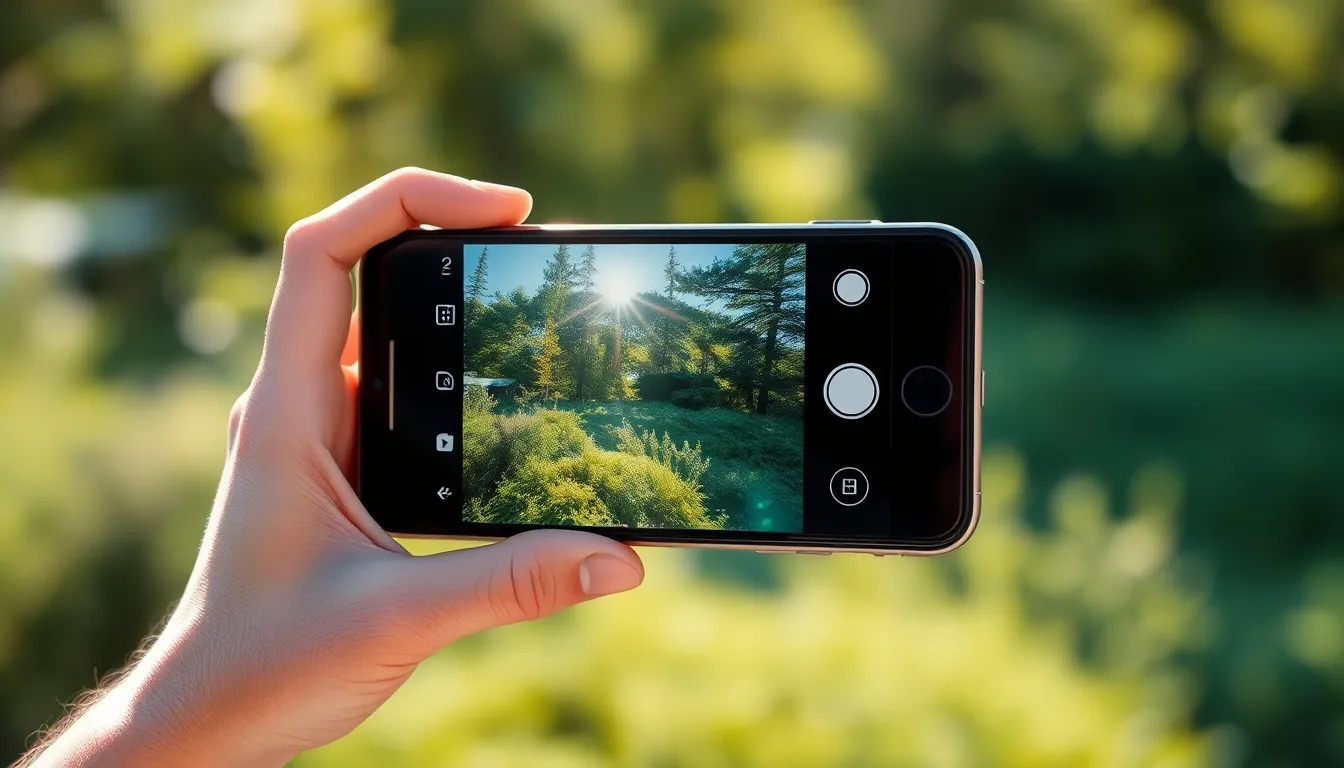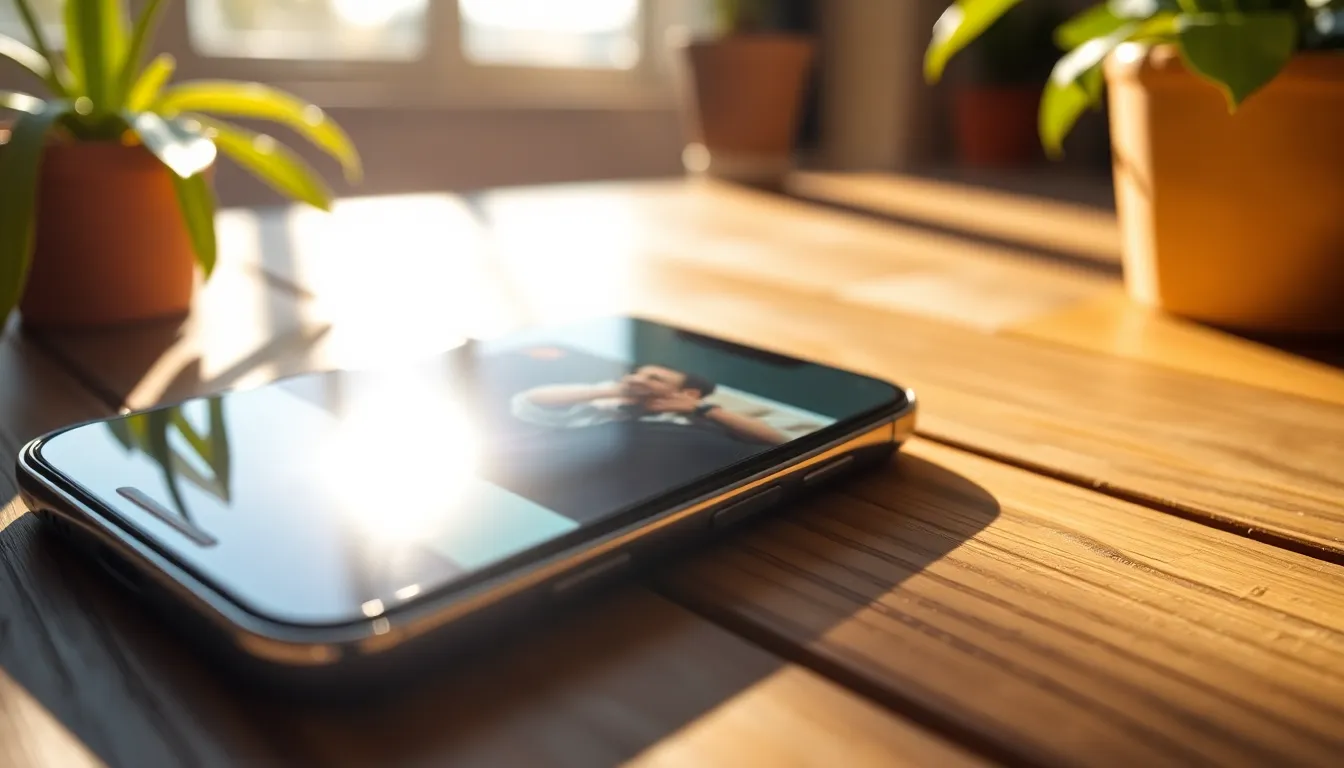Ever watched a video on your iPhone and thought, “Wow, did the sun just decide to crash this party?” It’s not just your imagination—some videos do seem to get a little too bright, like they’re auditioning for a role in a solar flare documentary. This phenomenon can leave users scratching their heads, wondering if their device is secretly trying to blind them or if they accidentally activated a new feature designed by a team of overly enthusiastic engineers.
Table of Contents
ToggleUnderstanding Video Brightness on iPhone
Video brightness on iPhone can vary due to several factors. One major factor is the automatic brightness adjustment feature. This feature uses light sensors to detect ambient light levels, adjusting video playback brightness accordingly.
Users can also experience differences based on the video format. HDR videos typically appear brighter than standard videos because of enhanced dynamic range capabilities. While many prefer the vivid colors of HDR, not all content supports this format, leading to variations in brightness.
Another aspect involves the iPhone’s display calibration. Apple optimizes display settings for different models, resulting in varied brightness levels between devices. Videos might look brighter on newer models due to advancements in display technology.
Video editing apps may influence brightness as well. Applications often include settings that automatically enhance brightness or contrast to improve visuals. Users engaging with these apps may notice inconsistencies in video brightness, especially when comparing edited clips to unedited originals.
Lastly, software updates may introduce changes to brightness handling. Occasionally, updates modify how the iPhone processes video playback, potentially leading to fluctuations in brightness levels. Users should check for updates regularly to ensure optimal performance.
Overall, understanding the interplay between these factors clarifies why some videos appear brighter on iPhones.
Factors That Affect Video Brightness

Several factors influence video brightness on iPhones. These elements include environmental lighting, camera settings, and device calibration variations.
Lighting Conditions
Lighting conditions play a crucial role in video brightness. Natural light can enhance brightness, while dim environments might lead to darker videos. During recording, the iPhone’s sensors analyze ambient light and adjust settings accordingly. Videos filmed in bright sunlight often exhibit increased brightness due to optimal exposure. Conversely, indoor settings might require additional adjustments for clarity. This adaptive behavior results in videos that can appear overly bright in some instances, especially if not balanced well.
Camera Settings
Camera settings significantly affect how videos are captured. Each recording mode offers varied brightness levels depending on user configurations. Adjustments such as exposure and white balance directly impact the final video output. Selecting a higher exposure value results in brighter videos, whereas lower settings may lead to darker representations. Users can also utilize features like HDR to enhance brightness and contrast during recording. Different iPhone models may exhibit slight variations in how these settings interact, affecting video brightness even further.
The Role of Software in Video Brightness
Software significantly impacts video brightness on iPhones. Apple’s iOS incorporates features that automatically adjust video settings based on ambient light.
iOS Features and Updates
iOS includes features like Automatic Brightness, which uses sensors to modify playback brightness. Brightness levels change with software updates, affecting video presentation. Users often notice variations in brightness after updates, as changes in video playback algorithms recalibrate settings.
iPhones also support HDR video playback, enhancing brightness and dynamic range. HDR technology optimizes video quality by adjusting contrast during playback. Users may find that HDR content appears brighter compared to standard videos. Additionally, certain photo and video editing apps enhance brightness during processing, leading to inconsistencies.
Understanding these features helps users navigate video brightness variations effectively. Recognizing the influence of software assists in managing expectations regarding video performance on different iPhone models.
User Settings and Preferences
User settings significantly influence how videos appear on an iPhone. Adjusting the brightness manually can lead to variations in video playback. Users may not realize that they can set preferences in the Device Settings under Display & Brightness. Automatic Brightness adjusts screen brightness based on ambient light, which can sometimes result in videos appearing brighter or dimmer than expected.
The video playback experience can also differ significantly depending on video editing apps. Many apps include built-in features that enhance brightness and contrast, leading to noticeable differences in brightness between edited and unedited clips. Users should check the settings within these apps to understand how adjustments affect playback.
Camera settings play a crucial role as well. Changing exposure or white balance can enhance brightness levels, directly impacting video output. Moreover, recording modes may also alter how brightness is handled. Users should familiarize themselves with optimal filming conditions to prevent excessively bright videos caused by improper settings.
Software updates often recalibrate playback algorithms. Updating the iOS can lead to changes in how brightness and contrast are managed, affecting user experience. Recognizing these updates can help users set realistic expectations regarding video playback.
HDR video playback is another important factor. Users experience enhanced brightness and dynamic range when viewing HDR content. Such videos often appear significantly brighter compared to standard videos. Understanding these user settings and preferences is essential for managing video brightness effectively and ensuring satisfactory playback across various iPhone models.
Understanding why some videos appear brighter on iPhones involves recognizing the interplay of various factors. Automatic brightness adjustments and HDR capabilities contribute significantly to this experience. Users should be aware of how environmental lighting and camera settings can affect video playback.
Additionally, the impact of software updates and user preferences cannot be overlooked. By familiarizing themselves with their device’s settings and the effects of different recording modes, users can better manage video brightness. This knowledge empowers them to enhance their video viewing experience while navigating the complexities of their iPhone’s display features.

